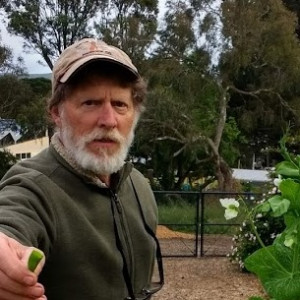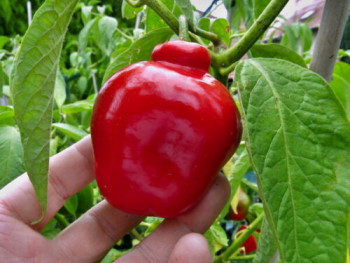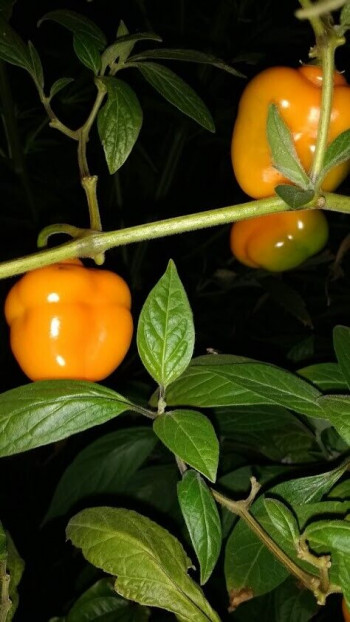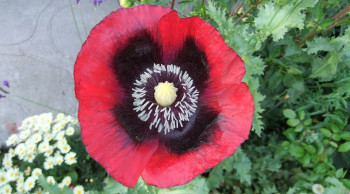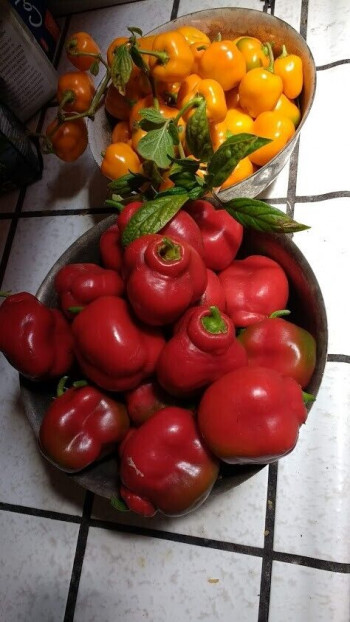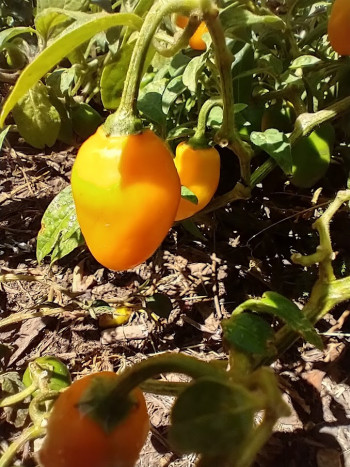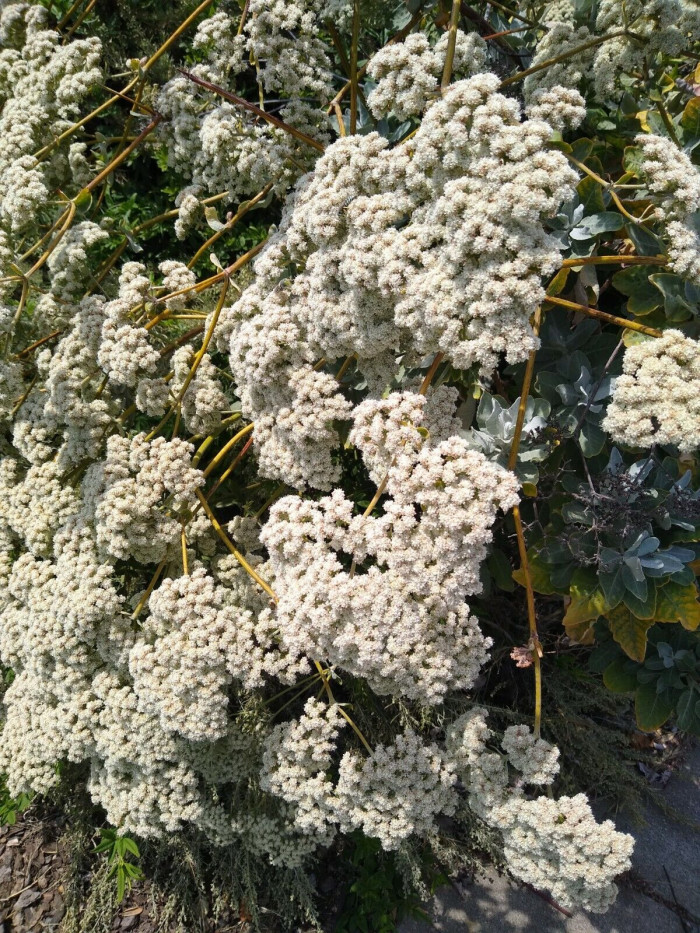
Tags: Open Pollinated
Growing Practices: No Pesticides No Herbicides No Fungicides
Latin Name: Eriogonum fasciculatum
Days to Maturity: 100
Description:
California Buckwheat (Eriogonum fasciculatum) 80 Nurseries Carry This Plant Add to My Plant List
Known by the common name California buckwheat. This common shrub is native to the southwestern United States and northwestern Mexico, where it grows on scrubby slopes and in chaparral and dry washes in a number of habitats. It is variable in appearance, forming a patchy, compact bramble or a spreading bush approaching two meters in height and three across. The leaves grow in clusters at nodes along the branches and are leathery, woolly on the undersides, and rolled under along the edges. Flowers appear in dense, frilly clusters which may be anywhere from a few millimeters to 15 centimeters wide. Each individual flower is pink and white and only a few millimeters across. This plant is particularly attractive to honey bees and is a good source of nectar over many months in drier areas.
There are four recognized varieties of California Buckwheat: 1. Eriogonum fasciculatum var. foliolosum or Leafy California Buckwheat, a brighter green variety which grows primarily on the coast and western side of the coastal mountain ranges, and is often carried in nurseries, 2. Eriogonum fasciculatum var. polifolium, a gray variety which grows primarily in the desert regions and through the coastal foothills, and is sometimes available in nurseries, 3. Eriogonum fasciculatum var. fasciculatum, or Coastal California Buckwheat, which grows most closely to the coast, and 4. Eriogonum fasciculatum var. flavoviride, or Sonoran Desert California Buckwheat, which grows primarily in the Sonoran Desert and desert mountains.
California Buckwheats are tough and easy to grow, even in very dry conditions. Plant in a well draining sunny site. It shouldn't need supplemental water after established, but it will tolerate occasional summer water better than most extremely drought tolerant California natives. Form is variable, ranging from often open and upright in the foothills, to often dense and mounding closer to the coast. It produces profuse pink to white and cream-colored flowers as early as March that dry to a pretty red rust color as the soil dries. It sheds its dried flowers and a significant portion of its small blade-like leaves each dry season, and is an important plant for creating natural mulch. California Buckwheat is a keystone species for sagebrush scrub ecosystems, and a great choice for wildlife and butterfly gardens. Low growing forms of both Leafy Green Buckwheat and Interior California Buckwheat can be found in nurseries to use as spreading ground covers. Eriogonum fasciculatum 'Theodore Payne' can grow low as just 1 foot with a spread of up to 8 feet.Plant Description
Plant TypePlant Type
Perennial herb, Shrub
SizeSize
1 - 6.6 ft tall
3 ft wide
FormForm
Rounded, Mounding, Spreading
Growth RateGrowth Rate
Fast, Slow
Dormancy Dormancy
Evergreen
Flower ColorFlower Color
Yellow, Cream, Pink, White
Flowering SeasonFlowering Season
Summer, Spring, Fall
Wildlife Supported
Bees, Butterflies
Bee gardens Bird gardens Butterfly gardens Butterfly host plants
Butterflies & moths hosted ( 15 confirmed , 36 likely * ) SHOW ALL
Icaricia acmon ImageAcmon Blue
Icaricia acmon
Apodemia mormo ImageMormon Metalmark
Apodemia mormo
Euphilotes battoides ImageSquare-spotted Blue
Euphilotes battoides
Callophrys dumetorum ImageBramble Hairstreak
Callophrys dumetorum
Icaricia lupini ImageLupine Blue
Icaricia lupini
Euphilotes bernardino ImageBernardino Blue
Euphilotes bernardino
Synchlora aerata ImageWavy-Lined Emerald
Synchlora aerata
Landscaping Information
SunSun
Full Sun
MoistureMoisture
Extremely Low, Very Low
Summer IrrigationSummer Irrigation
Max 1x / month once established, Never irrigate once established
NurseriesNurseries
Carried by 80
Ease of CareEase of Care
Very Easy
Cold ToleranceCold Tolerance
Tolerates cold to 15° F
Soil DrainageSoil Drainage
Fast, Medium, Slow
Soil DescriptionSoil Description
Prefers loamy soils. Soil PH: 5.0 - 8.5
Common usesCommon uses
Bank Stabilization, Bee Gardens, Bird Gardens, Butterfly Gardens, Deer Resistant, Groundcovers
Companion PlantsCompanion Plants
Many companions including Brittlebush (Encelia species), Sagebrush (Artemisia species), Sage (Salvia species), Manzanita (Arctostaphylos species), Ceanothus species, Yucca species, Dudleya species, and cactus species
MaintenanceMaintenance
Can handle hard pruning, taller varieties even into edged/hedged plantings.
PropagationPropagation?
For propagating by seed: No treatment.
Natural Setting
Site TypeSite Type
Dry slopes, often south facing as a common component of Coastal Sage Scrub. Inland it may be found in Valley Grassland. In high desert areas it occurs in Sagebrush Scrub and Pinyon-Juniper Woodland. It sometimes occurs in low desert areas as part of Creosote Bush Scrub
ClimateClimate
Annual Precipitation: 2.7" - 50.6", Summer Precipitation: 0.14" - 3.86", Coldest Month: 23.5" - 61.4", Hottest Month: 43.2" - 88.8", Humidity: 0.43" - 42.79", Elevation: 0" - 11630"
Alternative Names
Common Names: Eastern Mojave Buckwheat, Flattop Buckwheat, Yellow Buckwheat
Story of this Seed:
Great plant for native plant lovers, bee lovers, wasp and many other pollinators as all kinds of insects love CA Buckwheat
Growing Tips:
This seed is tiny yet very easy to grow. Spred the mast or cotten on top of indoor seed medium and seed will germinate in 5-10 days.Seperate the plants when they are bigger and plant outside in a few ore weeks in a sunny location.
Questions 0 Total
Ask a Question About California Buckwheat free shipping
Policies
Shipping Policies
we ship within 3 days (usually sooner). we use USPS
Return & Refund Policy
We guarantee the delivery of a good, fresh viable product.
Other Policies
If there is any problem, please reach out to us and we will make it right.
Mellon Farm
San Francisco, CA,
United States (Zone 4-10)
Established in 2010
1.00
acres in production

